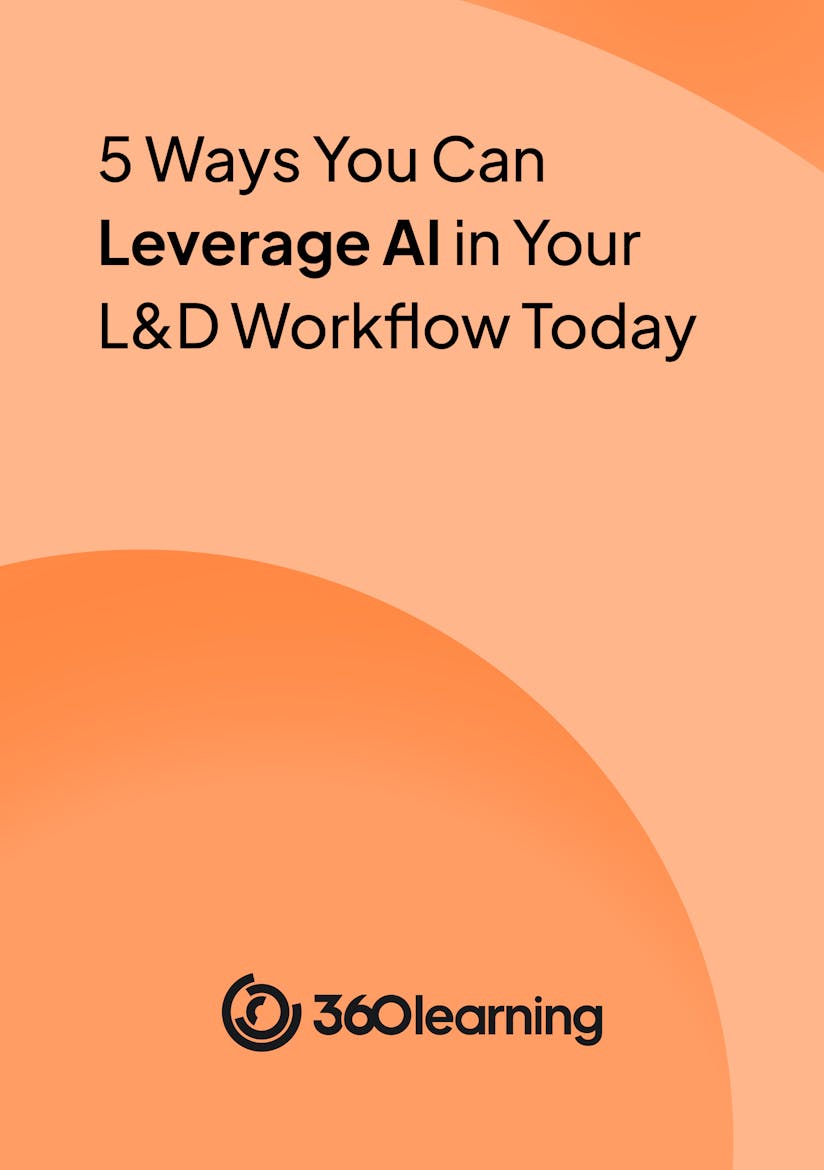
Any organization's key differentiator will be its people's adaptability and agility when operating in a tight labor market and challenging economic circumstances.
To play a significant role in the current market, learning and development will need to take the time to understand what is happening within our function and organizations to make an impact.
In this article, with insights from Christopher Lind, Chief Learning Officer at ChenMed, we explore operational excellence as an approach to solving real business problems, how building trustful relationships with stakeholders will improve your learning interventions, and the role of AI tools in learning and development.
Listen to our L&D Podcast episode: The Role of CLO in the Age of AI With Christopher Lind

Have the robots really taken over?
By providing your contact info, you agree to receive communications from 360Learning. You can opt-out at any time. For details, refer to our Privacy Policy.
Operational excellence
L&D teams need to understand what their employees need to be successful. A great mindset to help your team hone this focus is operational excellence.
Operational excellence involves delving deep into your L&D processes to better solve the pain points keeping your stakeholders up at night. This involves understanding the workflow of your processes, where handoffs between teams exist, and ensuring your learning interventions deliver on the initial request and solve the problem you targeted.
“When I look at my organization, one of the biggest things that I focus on is operational excellence because the quality of your operation determines the quality of your product,” says Christopher Lind, VP and Chief Learning Officer at ChenMed.
“One of the biggest things that I focus on is operational excellence because the quality of your operation determines the quality of your product,” says Christopher Lind, VP and Chief Learning Officer at ChenMed.
A crucial element of leveraging the operational excellence methodology to future-proof your L&D practice is that it takes time. In Christopher’s experience, it took two years to set the table and figure out the processes, how the team would run their organizational structure, and how everybody fits together.
Related: Decipher the Signal From the Noise: L&D Leadership Today With Simon Gibson
L&D is in the business of people
When you’re conversing with stakeholders about the problems they are looking to solve, remember that L&D is in the business of people.
“People aren’t transactions. They’re relationships. When I think about the stakeholders I work with, I don’t wait until a training problem arises to engage in building a relationship with them,” says Christopher.
“When I think about the stakeholders I work with, I don’t wait until a training problem arises to engage in building a relationship with them."
Get to know your stakeholders to help you build trust and a relationship. Over time, you’ll notice how much people will open up to you when they know you genuinely are interested in their pain points. Then, when you suggest that the option they have in mind might not be the right approach, they won't see you as an adversary but as an ally.
From here, you can discuss what good looks like on the other side of the problem. When you work together to start unpacking the problem, you will be able to diagnose whether it is a knowledge, skills, or accountability gap. You’ll find that these conversations are no longer about who knows best, but a team effort to break down and solve the problem.
AI in the age of active learning
Looking at the future of AI in learning and development, the real impact will go beyond the current focus of leveraging the tool to generate more content.
If L&D teams start redefining the bags of tricks that we’ve used in the past and that haven’t worked, AI will open up new possibilities to move beyond only marginally improving what we’re doing in our organizations today.
Active learning, for example, can be scaled using generative AI in simulated conversations with employees to give them real-time feedback in their workflow and help them improve through in-the-moment coaching and guidance. Until now, this type of learning intervention hasn’t been scalable or possible.
“To me, 2024 and beyond is the age of active learning, where learning is much more active, scalable, and possible than ever before,” says Christopher.
L&D’s rocketship into the future
Many AI use cases for L&D focus on the end user, but you and your team can also leverage the technology for problem analysis conversations or skills mapping.
1. Problem analysis conversations:
Christopher and his team use generative AI to fine-tune their problem analysis process. They run the problem analysis through AI to brainstorm how to move forward and identify any information they may have missed.
2. Skills mapping:
A tool like SkillsGPT is changing the skills-based learning game by generating the skills relevant today and the skills your organization will need tomorrow. The tool also generates an assessment for proficiency—all in seconds.
From here, your team can have informed conversations with your stakeholders about the nuts and bolts of what is required for each job while also considering the enablers and restrictors within each job in your industry.
Related: AI-Powered Skills-Based Learning With Brandon Caldwell
Adapting L&D for the future
To start adapting your L&D practice for the age of AI, a great place to begin is to look inside your organization to identify what needs fixing.
You cannot fix what you don’t know. You may be tempted to bump an analysis of how work gets done in an organization down your list of priorities. However, you need to dig in and do the work because it will help you make the most significant impact.
“My experience is that it’s the most worthwhile thing because you can't change your whole function overnight. You have to figure out where it is the most broken so you can tweak it and improve it for an overall improvement,” says Christopher.
“You have to figure out where it is the most broken so you can tweak it and improve it for an overall improvement."
Moreover, if you don't understand the problem, you may find the vast oceans of solutions overwhelming and struggle to find an impactful point to start future-proofing your L&D practice.
Explore further insights on AI and operational excellence in L&D in the episode on The L&D Podcast: The Role of CLO in the Age of AI With Christopher Lind.
Want more peer insights on transforming workplace learning? Sign up to become a member of the L&D Collective. Or you can subscribe below to our weekly newsletter to receive our latest posts directly in your inbox.




